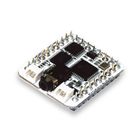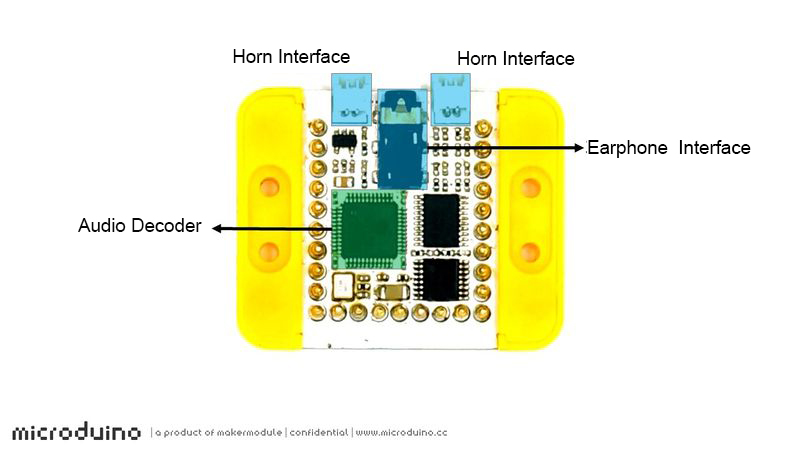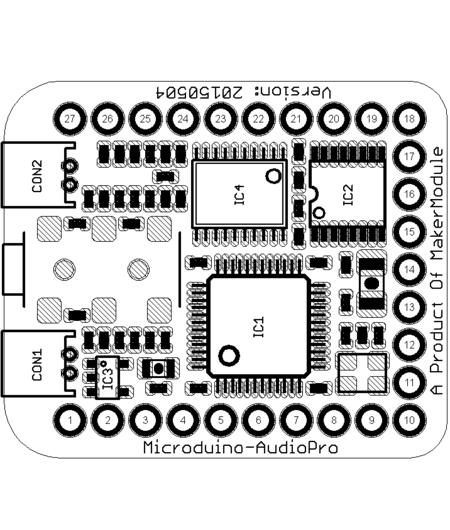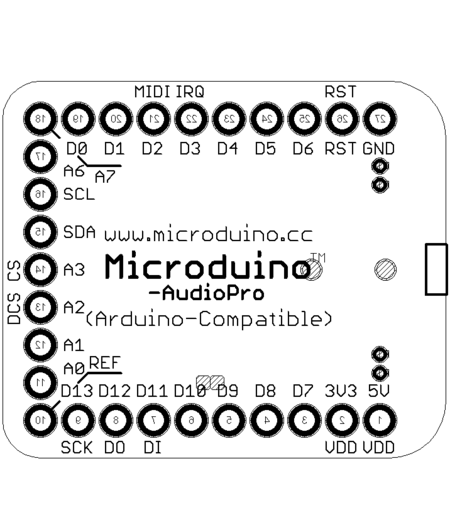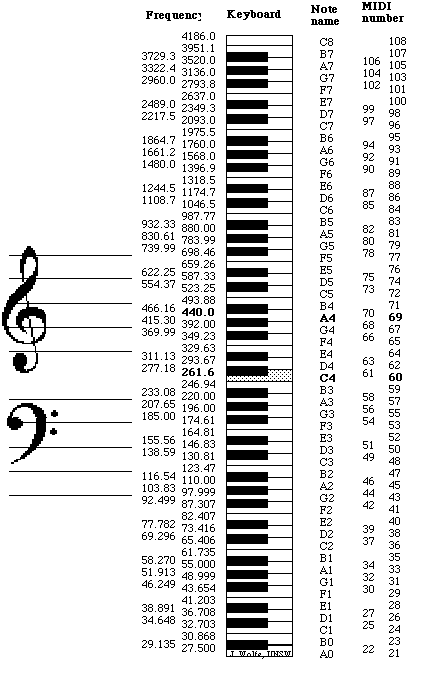“Microduino-Module AudioPro/zh”的版本间的差异
(→附录) |
Zhangfengfeng(讨论 | 贡献) |
||
| (未显示1个用户的12个中间版本) | |||
| 第1行: | 第1行: | ||
| − | {{Language|Microduino- | + | {{Language|Microduino-AudioPro}} |
{| style="width: 1000px;" | {| style="width: 1000px;" | ||
|- | |- | ||
| | | | ||
| − | [[File:Microduino- | + | [[File:Microduino-AudioPro-rect.jpg|400px|thumb|right|Microduino-AudioPro]] |
Microduino AudioPro是以VS1053为解码器,集成2.2W立体声功放,并且支持2.5mm立体声耳机接口的多功能音频模块,支持MIDI功能 | Microduino AudioPro是以VS1053为解码器,集成2.2W立体声功放,并且支持2.5mm立体声耳机接口的多功能音频模块,支持MIDI功能 | ||
| 第77行: | 第77行: | ||
*音频文件转16进制工具:'''[[File:DataToHex.zip]]''' | *音频文件转16进制工具:'''[[File:DataToHex.zip]]''' | ||
| − | |||
| − | == | + | ==图库== |
| + | {| border="0" cellpadding="10" width="100%" | ||
| + | |- | ||
| + | |width="50%" valign="top" align="left"| | ||
| + | [[file:Microduino-AudioPro-T.PNG|thumb|450px|center|Microduino-AudioPro TOP]] | ||
| + | |width="50%" valign="top" align="left"| | ||
| + | [[file:Microduino-AudioPro-B.PNG|thumb|450px|center|Microduino-AudioPro BUT]] | ||
| + | |} | ||
| + | |||
| + | |||
| + | ==附录== | ||
| + | ===MIDI numbers,Note names and frequencies=== | ||
| + | '''可参考:[http://newt.phys.unsw.edu.au/jw/notes.html NUSW]''' | ||
| + | {| border="0" cellpadding="10" width="100%" | ||
| + | |- | ||
| + | |width="50%" valign="top" align="left"| | ||
| + | [[file:MIDIlist.gif|430px|thumb|left| MIDIlist]] | ||
| + | |width="50%" valign="top" align="left"| | ||
| + | *Note names, MIDI numbers and frequencies are related here in tables and via an application that converts them. The musical interval between two notes depends on the ratio of their frequencies. | ||
| − | + | *An octave is a ratio of 2:1 and, in equal temperament, an octave comprises 12 equal semitones. Each semitone therefore has a ratio of 21/12 (approximately 1.059). By convention, A4 is often set at 440 Hz. These data were used to calculate the first table below, which gives the frequency of any standard keyboard note or MIDI note number. To convert from any frequency to pitch (i.e. to the nearest note and how far it is out of tune). | |
| − | == | + | *This table is reproduced inverted below, i.e. with high pitch at the top. |
| − | + | *To convert from any frequency to pitch (i.e. to the nearest note and how far it is out of tune, go to the frequency to note converter written by Andrew Botros. | |
| + | *How to do the caluation? Suppose thattwo notes have frequencies f1 and f2, and a frequency ratio of f2/f1. An octave is a ratio of 2:1, so the number of octaves between f2 and f1 is | ||
| + | **no = log2(f2/f1). | ||
| + | |||
| + | *Now to divide the octave into smaller units. In equal temperament, where all semitones have the same frequency ratio of 21/12, conversion between note name and frequency is simple. First, one needs a reference note and frequency. This is usually A4, which is often set at 440 Hz. For a note that lies n semitones higher (or −n semitones lower), the frequency is then | ||
| + | **fn = 2n/12*440 Hz. | ||
| + | |||
| + | *Conversely, one can obtain n, the number of semitones from A4, from | ||
| + | **n = 12*log2(fn/440 Hz). | ||
| + | |||
| + | *Similar equations give no, the number of octaves from A4, and nc, the number of cents from A4: | ||
| + | **no = log2(fn/440 Hz) and nc = 1200*log2(fn/440 Hz). | ||
| − | == | + | *In electronic music, pitch is often given by MIDI number: let's call it m for our purposes. m for the note A4 is 69 and increases by one for each equal tempered semitone, so this gives us a simple conversion between frequencies and MIDI numbers (again using 440 Hz as the pitch of A4): |
| + | **m = 12*log2(fm/440 Hz) + 69 and fm = 2(m−69)/12(440 Hz). | ||
| − | + | *The notation used here is not universal: in German speaking countries, H is used instead of B, and B is used for Bb. (This allowed Bach to write his name in the Art of Fugue.) And of course when different tuning systems are used, different names are applied. | |
| − | + | |} | |
| − | |||
| − | |||
===MIDI旋律乐器组(GM1)=== | ===MIDI旋律乐器组(GM1)=== | ||
2017年4月25日 (二) 06:04的最新版本
| Language | English |
|---|
|
Microduino AudioPro是以VS1053为解码器,集成2.2W立体声功放,并且支持2.5mm立体声耳机接口的多功能音频模块,支持MIDI功能
目录特色
规格
引脚说明
文档
开发
图库
附录MIDI numbers,Note names and frequencies可参考:NUSW
MIDI旋律乐器组(GM1)
MIDI打击乐器组(GM1+GM2)
|
